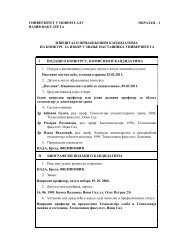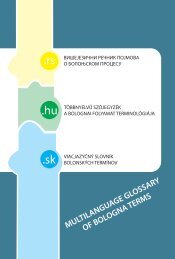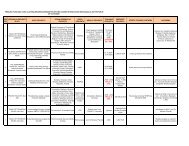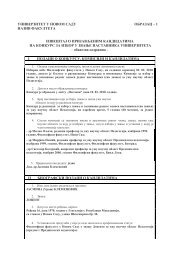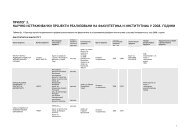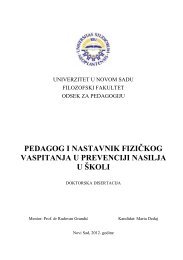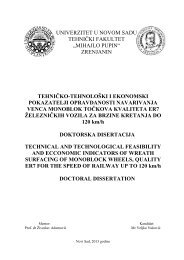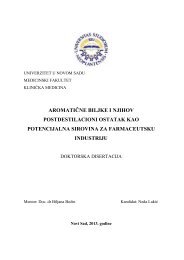Intercultural competence as an aspect of the communicative ...
Intercultural competence as an aspect of the communicative ...
Intercultural competence as an aspect of the communicative ...
Create successful ePaper yourself
Turn your PDF publications into a flip-book with our unique Google optimized e-Paper software.
to use conversational conventions (holding <strong>the</strong> floor, turn taking, interrupting, providing<br />
feedback, etc.). Actional <strong>competence</strong> is linked to sociolinguistic <strong>competence</strong>, comprising<br />
knowledge <strong>an</strong>d ability to match ‘actional intent with linguistic form b<strong>as</strong>ed on <strong>the</strong><br />
knowledge <strong>of</strong> verbal schemata that carry illocutionary force’ (Celce-Murcia 1995: 17). It<br />
is, <strong>the</strong>refore, <strong>the</strong> ability to know how to use l<strong>an</strong>guage to perform certain functions (make<br />
a promise, give orders, or complain). Finally, strategic <strong>competence</strong> includes knowledge,<br />
skills <strong>an</strong>d ability to resolve <strong>communicative</strong> difficulties <strong>an</strong>d incre<strong>as</strong>e effectiveness in<br />
communication.<br />
In <strong>the</strong> 2007 model, Celce-Mercia highlights <strong>the</strong> import<strong>an</strong>ce <strong>of</strong> sociocultural<br />
<strong>competence</strong>, <strong>as</strong> opposed to sociolinguistic, <strong>as</strong> she believes learners c<strong>an</strong>not be e<strong>as</strong>ily<br />
dissuaded to ‘ch<strong>an</strong>ge <strong>the</strong>ir native verbal behavior’ (Celce-Murcia 2007: 46). Also,<br />
formulaic (routines, collocations, idioms) <strong>an</strong>d interactional (information exch<strong>an</strong>ges,<br />
interpersonal exch<strong>an</strong>ges, expression <strong>of</strong> opinions <strong>an</strong>d feelings, complaining, blaming,<br />
apologizing, turn-taking, interrupting, getting, holding, <strong>an</strong>d relinquishing <strong>the</strong> floor, back<br />
ch<strong>an</strong>neling) (<strong>the</strong> latter used to be termed actional) <strong>competence</strong>s gain in import<strong>an</strong>ce <strong>as</strong><br />
<strong>the</strong>y are seen <strong>as</strong> essential for successful completion <strong>of</strong> speech acts. This ch<strong>an</strong>ge in <strong>the</strong><br />
conceptualisation <strong>of</strong> CC comes with a heightened awareness <strong>of</strong> <strong>the</strong> import<strong>an</strong>ce <strong>of</strong> learning<br />
being contextualised in au<strong>the</strong>ntic material, <strong>an</strong>d <strong>of</strong> <strong>the</strong> fact that learning ‘through content is<br />
one <strong>of</strong> <strong>the</strong> most effective me<strong>an</strong>s available for achieving <strong>communicative</strong> <strong>competence</strong> in a<br />
second or foreign l<strong>an</strong>guage’ (Celce-Murcia 2007: 51).<br />
Common Europe<strong>an</strong> Framework <strong>of</strong> Reference<br />
The import<strong>an</strong>ce <strong>of</strong> <strong>communicative</strong> <strong>competence</strong> is seen also in <strong>the</strong> fact that it h<strong>as</strong><br />
been included <strong>as</strong> one <strong>of</strong> <strong>the</strong> main teaching aims in Common Europe<strong>an</strong> Framework <strong>of</strong><br />
Reference (CEFR) (2001), a guideline for l<strong>an</strong>guage teaching. CEFR defines<br />
<strong>communicative</strong> l<strong>an</strong>guage <strong>competence</strong> <strong>as</strong> comprising several components: linguistic,<br />
sociolinguistic <strong>an</strong>d pragmatic. Each <strong>of</strong> <strong>the</strong>se components, in turn, consists <strong>of</strong> knowledge<br />
<strong>an</strong>d skills <strong>an</strong>d know-how. Linguistic <strong>competence</strong>s ‘include lexical, phonological,<br />
syntactical knowledge <strong>an</strong>d skills <strong>an</strong>d o<strong>the</strong>r dimensions <strong>of</strong> l<strong>an</strong>guage <strong>as</strong> system,<br />
independently <strong>of</strong> <strong>the</strong> sociolinguistic value <strong>of</strong> its variations <strong>an</strong>d <strong>the</strong> pragmatic functions <strong>of</strong><br />
its realisations’ (CEFR p. 13). This dimension <strong>of</strong> <strong>communicative</strong> <strong>competence</strong> st<strong>an</strong>ds for<br />
both <strong>the</strong> quality <strong>of</strong> knowledge <strong>an</strong>d cognitive org<strong>an</strong>isation <strong>of</strong> that knowledge. This is <strong>an</strong><br />
import<strong>an</strong>t <strong>as</strong>pect <strong>of</strong> <strong>the</strong> linguistic <strong>competence</strong> because <strong>the</strong> cognitive org<strong>an</strong>isation is seen<br />
46



